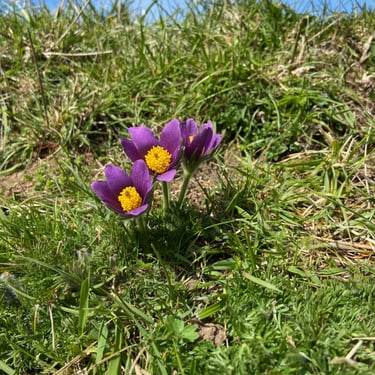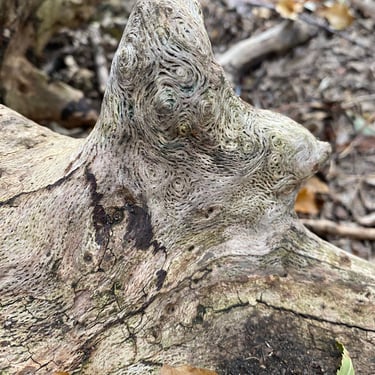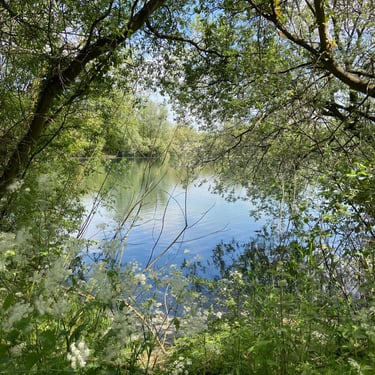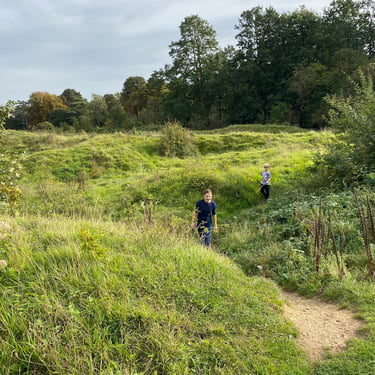The power of Nature
If you went for a walk and felt good afterwards, there is good reason. But there's a few easy things you can do to really max the benefits of time outdoors for your mental health...
NATURE THERAPY
Jenna Louise Maryniak, BA(Hons), Prof. Dip Psy C., MNCPS Accred
6/15/20253 min read


The power of Nature and Exercise is a powerful combination. Feeling the wind, rain or sun on your face, watching birds and animals, being present in a wide open space connects us to a simpler, more grounded and natural way of being, away from the stresses of life. Exercise helps release pent up tension and boost natural endorphins.
But add to that some Mindfulness and grounding techniques, and it can be a powerful tool to help manage stress and anxiety.
Here’s a few tips that you can incorporate into your walks to bring a little more calm into your every day life.
Breathing exercises
Reduce stress and anxiety, calm your nervous system. Regulate.
Find a nice spot where you can sit comfortably and place one hand on your abdomen. Breathe in through your nose, deeply enough that the hand on your abdomen rises. Hold the air in your lungs, and then exhale slowly through your mouth, with your lips puckered as if you are blowing through a straw. The secret is to go slow: Time the inhalation (4s), pause and exhalation (6s). Practice for 3 to 5 minutes.
Grounding techniques
Take a break from the worries of the past, the anxieties of the future, the chaos in your mind – and just be in the present moment.
FIVE MINDFULNESS steps to get you out of your over-thinking mind and into your senses:
5. What are 5 things you can see? Look for small details such as shapes in the cloud, the way light reflects, the detail and texture of the landscape or a bird in the sky. Can you name them?
4. What are 4 things you can feel? Notice the sensation of clothing on your body, the sun on your skin, or the feeling of sun, wind or rain on your face. Feel the leaves as you walk past or walk barefoot and feel your connection to the earth.
3. What are 3 things you can hear? Pay special attention to the sounds your mind has tuned out, such as the birds, can you pick out the different calls. Apps like ‘Merlin Bird ID’ can help you learn to tune your ears!
2. What are 2 things you can smell? Try to notice smells in the air around you, like the rain after sun or freshly cut grass. You may also look around for something that has a scent, such as a flower.
1. What is 1 thing you can taste? Have a snack, but take a moment to really focus on the flavours and smell. Enjoy the sensation and sustenance. Make eating mindfully a thing. It’s too easy to take it for granted and multi-task or scroll on your phone.
Notice any intrusive thoughts but let them float past like a cloud in the sky. Feel stress leave your body through your breath or from the top of your head into the sky.
Search for gratitude
Glimmer hunting
Mindfulness can help connect you to feelings of gratitude. Notice the beauty in things. The sunshine after the rain. The colour of the flowers. The coolness of the wind. The freedom to walk. Feel grateful for the beauty and precious moments. Allow yourself to feel joy in the simple things in life.
Body Scan
Walking is a great way to connect your mind with your body. You can also add some simple exercises. This can be particularly helpful in processing trauma or difficult emotions.
Take 5 long, deep breaths through your nose into your belly, and exhale through puckered lips.
Notice where you are feeling tension in your body. Are you tight in your neck and shoulders, legs or hands?
Tense and release the tight muscles. Stretch them out. Stomp your feet on the ground several times. Breathe in to the muscles and feel them relax.
Take 5 more deep breaths and notice the feeling of calm in your body.









